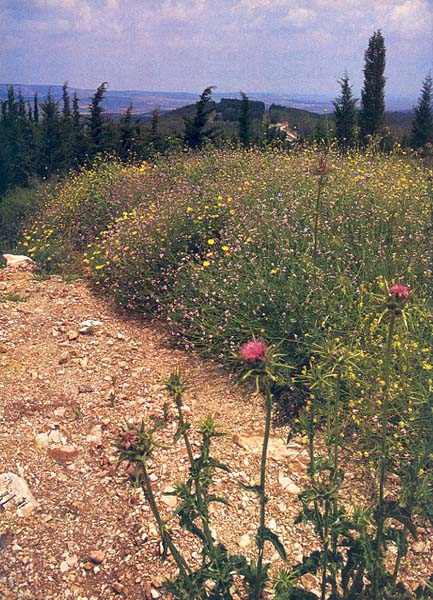Image Details

Ancient Cabul, King Solomon’s gift to King Hiram of Tyre, may lie beneath the trees on the hilltop in the background. Given in gratitude for Hiram’s help in building the Temple in Jerusalem, the gift actually included 20 towns in the Galilee. When Hiram inspected the towns, he was dissatisfied. The area became known as “Cabul-land,” an expression of Hiram’s displeasure, but no one knows exactly what Cabul means (1 Kings 9: 11–13). In 1980 when the archaeologists first visited the site, they found an 80- by 80-foot mound of local limestone blocks rising 10 feet above bedrock, surrounded by a number of smaller stone piles. Pottery sherds scattered on the surface dated to the 10th–9th century B.C., a date which placed the site in the time of Solomon who ruled from about 961 to 921 B.C. Another clue to identifying the site as Cabul was the persistence of the ancient name, now the name of an Arab village about a mile away.
